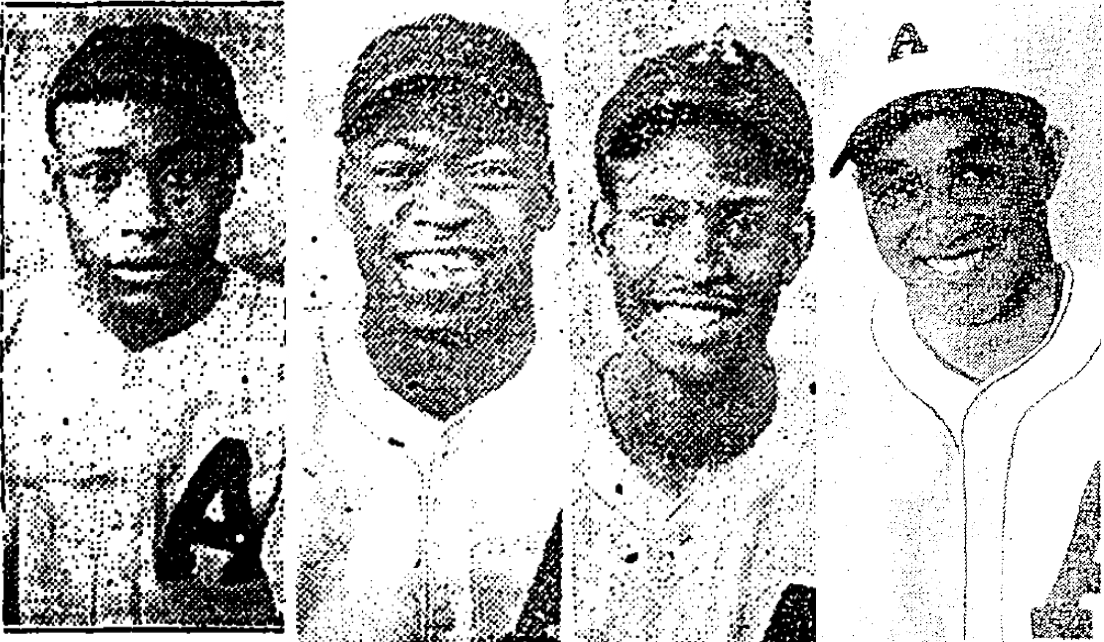Negro Leagues DB Update: 1938 Negro American League
June 4, 2018 by Gary Ashwill · Leave a Comment
We’ve added the 1938 Negro American League to the database, meaning that we now have every major Negro league from 1933 through 1946—with 1947 coming soon.
In 1938 the NAL’s center of gravity moved decisively to the South. The Cincinnati Tigers, St. Louis Stars, and Detroit Stars all folded—while two new clubs in the South were added, the Atlanta Black Crackers and Jacksonville Red Caps. This meant that four of the NAL’s seven teams were now located in the South. And for two of these teams, 1938 marked the high point of their history.
The Memphis Red Sox had finished in seventh place in 1937. For the new season they hired the manager of one of the teams that had folded, Double Duty Radcliffe of the Cincinnati Tigers—and he brought in the core of the Tigers, a very good team that had finished with the second-best overall record in the league, despite missing the split-season playoffs. These players included the outfielder Lloyd Davenport , pitchers Porter “Ankleball” Moss and Willie Jefferson , first baseman Jelly Taylor , and (most importantly) center fielder Neil Robinson . Radcliffe moved Robinson, the best athlete on the team, to shortstop, and brought back the old Memphis hero Larry Brown to catch. Thus reinforced, the Red Sox managed to edge the defending champion Kansas City Monarchs for the first-half title.
(Sadly, at the moment our coverage of Memphis is pretty unfair to a good team—they went only 15-17 in games for which we have box scores.)
The NAL’s second half is the (rather improbable) story of another southern club. The Atlanta Black Crackers ended the first half far adrift from the leaders, having gone 11-22 against NAL teams. One manager ( Nish Williams ) had been fired for insubordination and replaced by the aging star Dick Lundy , whose forearm had been fractured by a pre-season pitch, rendering him too injured to play (he would never play in the Negro leagues again, in fact). Shortly after the second half started Lundy was hired away by the Newark Eagles , and the Black Crackers, seemingly desperate, gave the job to the 19-year-old second baseman, Gabby Kemp . A loudmouth spark plug who didn’t hit much (.193 for Atlanta), Kemp had already been dealt to Jacksonville earlier in the season, then quickly reacquired after impressing in a series against the Black Crackers.
Kemp was paired with another teenager at shortstop, the fielding wizard Tommy Butts , who hadn’t even graduated from high school yet. Atlanta got some good pitching from the likes of Bullet Eddie Dixon (5-3, 2.92) and Telosh Howard (2.01 and a 17-strikeout game against the Red Caps), slick fielding from first baseman Red Moore , and hitting from Moore (.364), Donald Reeves (.397, 5 homers) , and Babe Davis (.301, 15 extra base hits in 38 games). The Black Crackers suddenly gelled, winning twelve games in a row, and beat out the Monarchs and American Giants for the second half crown.
The all-Southern championship series between Atlanta and Memphis proved anticlimactic. The Red Sox easily took the first two games in Memphis. However, the Black Crackers rented Ponce de Leon Park from the white Atlanta Crackers. The latter had made their league’s playoffs, so now the park was unavailable. When the Black Crackers couldn’t come up with an alternative, the league eventually called the series off. Officially there was no winner, but in subsequent years the Memphis Red Sox were usually thought of as the 1938 NAL champs.
There was no World Series in 1938, but there probably didn’t need to be. The NNL champion Homestead Grays beat the Black Crackers three straight in an early season series, and absolutely dominated the Memphis Red Sox, going 10-0 against them. This included 9 wins in a late July barnstorming series through the Midwest. On July 28, in Zanesville, Ohio, Josh Gibson drove the Grays to a 17-4 win over Memphis with four home runs, the only four-homer game ever recorded in the Negro leagues. (Unfortunately no box score or score card has been found, so the game isn’t counted in Gibson’s statistics.)
Next up for the DB: the 1947 and 1948 Negro leagues, the 1900-1902 Cuban League, the 1927 ECL , 1929 ANL, and more.


